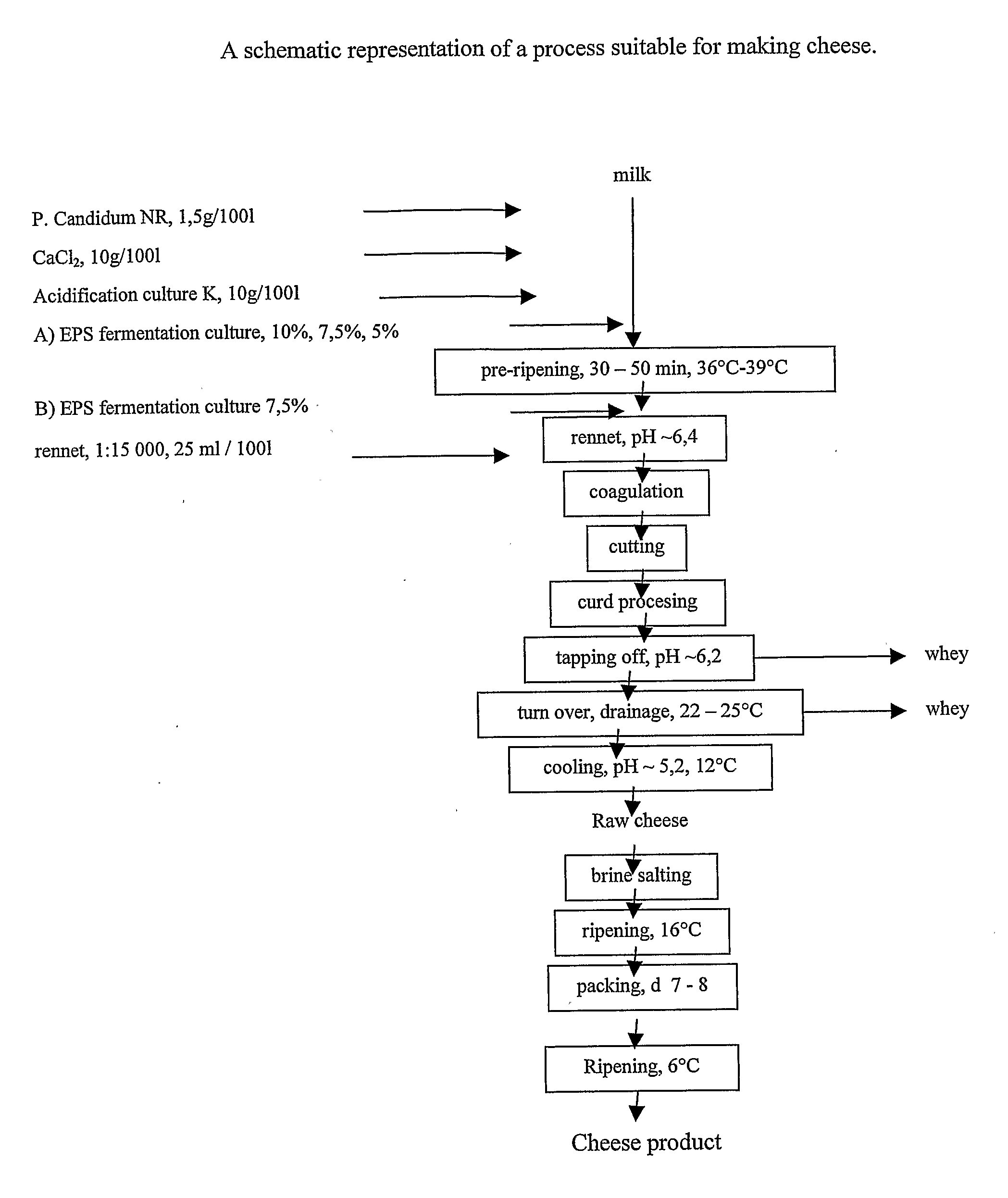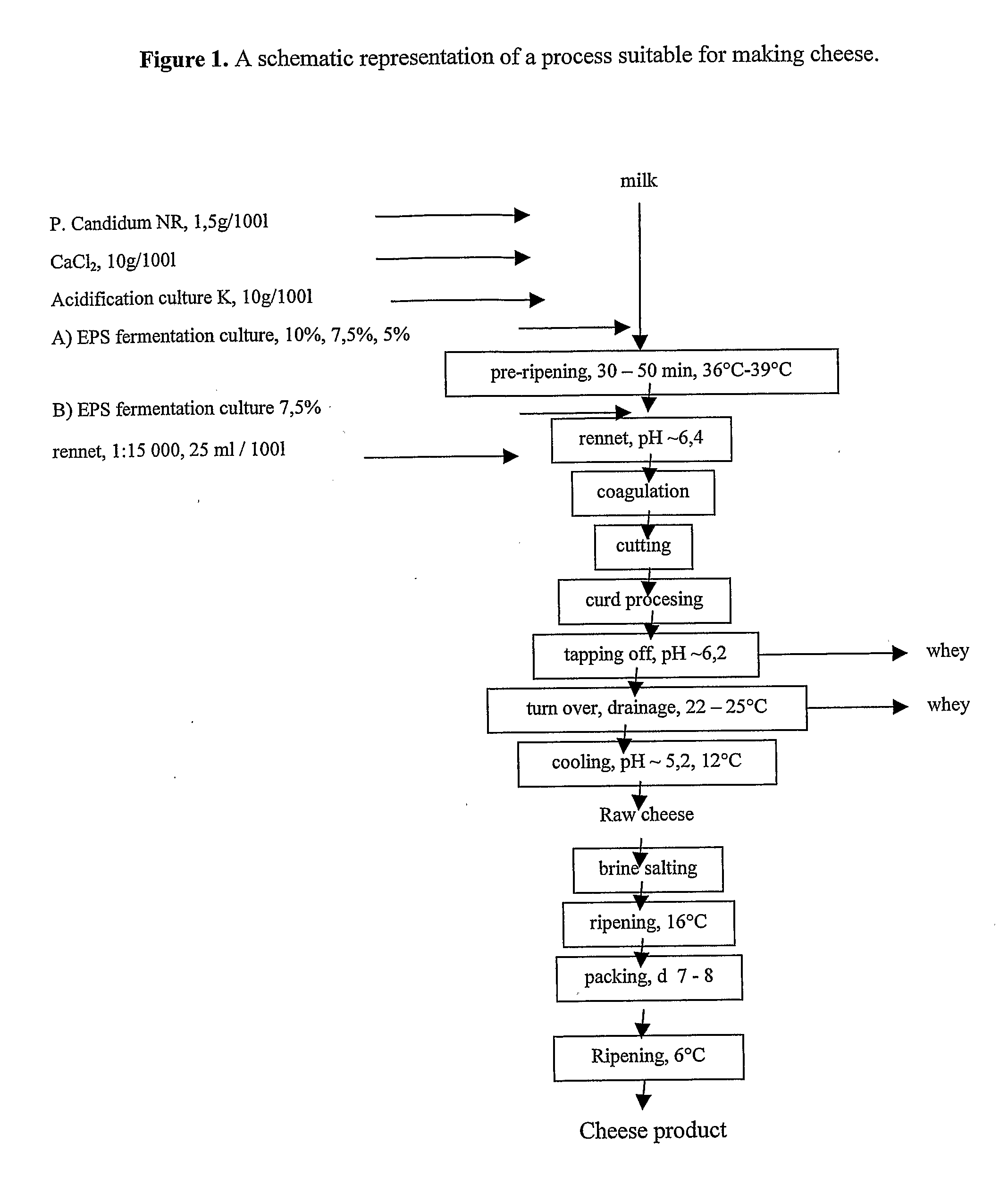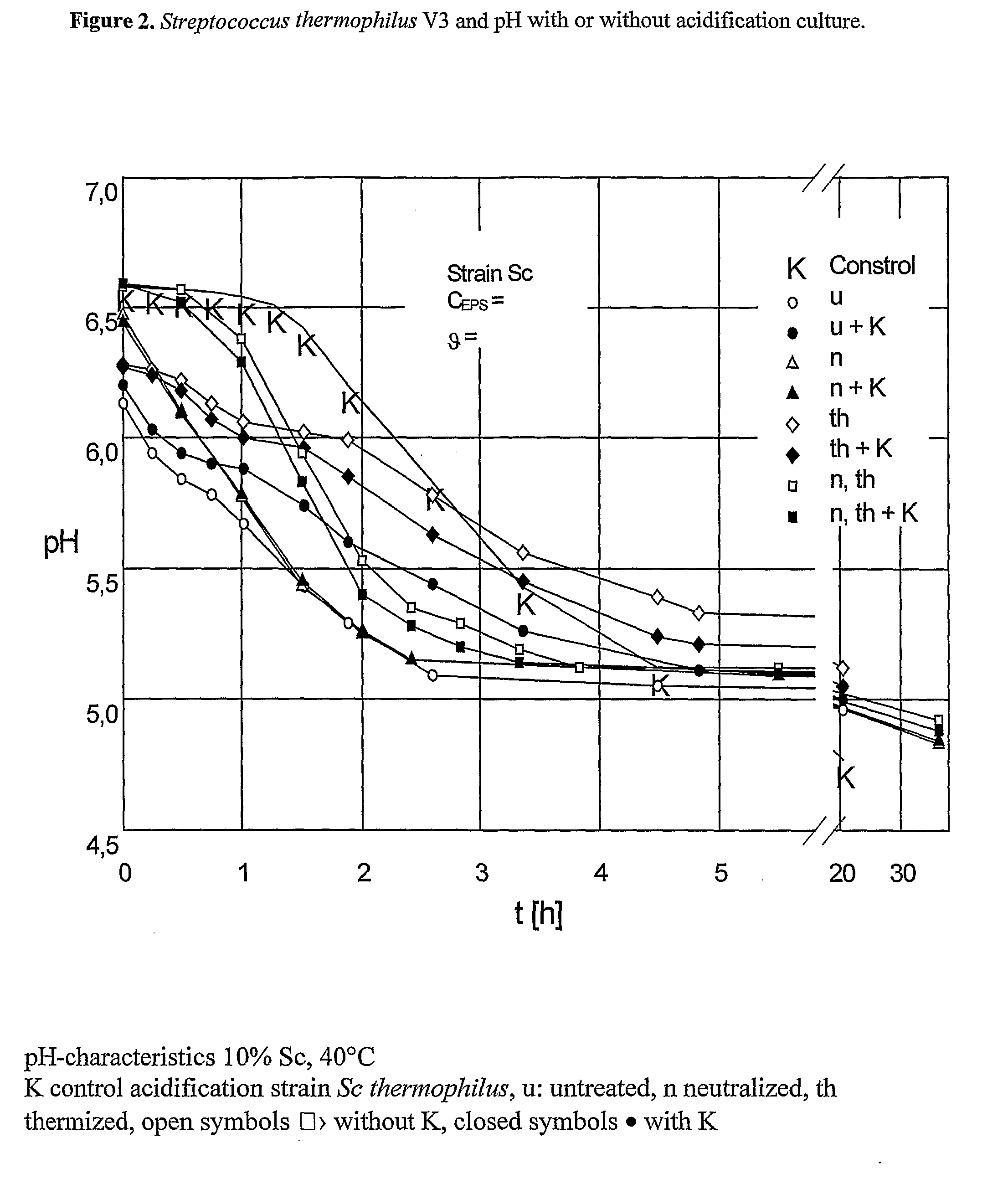Cheese Products
a technology of cheese products and cheese, applied in the field of cheese products, can solve the problems of adverse effects on the cheese product, faster microbial acidification, adverse effects on the flavour and ripening of cheese,
- Summary
- Abstract
- Description
- Claims
- Application Information
AI Technical Summary
Benefits of technology
Problems solved by technology
Method used
Image
Examples
example 1
[0394]There is provided a schematic representation of an example of a process that may be followed in order to produce a soft cheese product (see FIG. 1). The acidification of the medium suitable for forming cheese may be acidified by starter acidification lactic acid bacteria that are well known by persons of skill in the art.
Example 2
1. Methodology for Detecting pH Courses in Milk.
[0395]The described methodology was applied for all examined strains according to FIG. 2, FIG. 3, FIG. 4 and FIG. 5. The objective was to detect the acidification courses in milk used for cheese-making at temperatures of 34° C. and / or 37° C. and / or 40° C.
Step 1: Production of an EPS Fermentation Culture.
[0396]All fermentation media were inoculated with 1% of the activated culture, i.e. 1 ml culture / 100 ml medium. The strains Sc and Lc were cultivated in VIS-START 10 supplied by Danisco Germany , Niebüll. The strains Lb and Ln were cultivated in VIS-START 10 plus 10% saccharose (w / v). The concentration wa...
example 2
2. Methodology for Detecting Syneresis (See FIG. 6).
[0414]This methodology was applied for the experiments the results from which are presented in FIG. 7 and FIG. 8.
[0415]It was the objective to study the course of syneresis in milk used for cheese-making at temperatures of 34° C. and / or 37° C. The syneresis trials were carried out for the strains Lb and Lc at 34° C. and 37° C. CEPS was 5% and 10%, the culture was added either without being subject to preliminary treatment or after heating.
[0416]For the examinations, the dynamic model system according to Huber et al., (2001) was applied (Huber, P., Fertsch, B., Schreiber, R. & Hinrichs, J. 2001, Dynamic model system to study the kinetics of thermally-induced syneresis of cheese curd grains. Milk Science International 56 (10): 459-552).
[0417]However, for simulating the production of soft cheese, the above method was slightly modified as follows:[0418]The drained whey was placed in test tubes containing 25 ml reconstituted sweet whey ...
example 3
3. Co-Ordination of the pH Courses and the Syneresis Experiments.
[0425]The objective was to represent the experimental courses of pH and syneresis in time, as they run simultaneously while making the cheeses, in order to deduct an appropriate technology.
[0426]Lines A and B in FIG. 9 refer to cheese at a temperature of 37° C. The pH line refers to the pH course as determined by means of the method described in Example 1 and represented in FIG. 3 and FIG. 4. The syneresis curve was determined according to the method described in Example 2 and represented in FIGS. 7 and 8.
[0427]The space bracketed between lines A and B in FIG. 9 represents a shift in time that can be explained by transferring the data from FIG. 10.
[0428]Thus, first, the pre-ripening time is 60 min. Additionally there is the gel formation until cutting. The cutting time was calculated from the measured gelling point (oscillatory measurement). Calculation of cutting time=time until gelling point×4.
[0429]By way of an illu...
PUM
 Login to View More
Login to View More Abstract
Description
Claims
Application Information
 Login to View More
Login to View More - R&D
- Intellectual Property
- Life Sciences
- Materials
- Tech Scout
- Unparalleled Data Quality
- Higher Quality Content
- 60% Fewer Hallucinations
Browse by: Latest US Patents, China's latest patents, Technical Efficacy Thesaurus, Application Domain, Technology Topic, Popular Technical Reports.
© 2025 PatSnap. All rights reserved.Legal|Privacy policy|Modern Slavery Act Transparency Statement|Sitemap|About US| Contact US: help@patsnap.com



